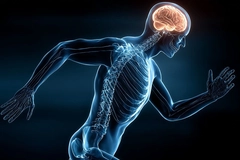
- Industry news
Industry news
Trending now
- Category news
- Reports
Trending now
- Key trends
Trending now
- Multimedia
Multimedia
Trending now
- Journal
- Events
Trending now
- Suppliers
Suppliers
Trending now
- Home
- Industry news
Industry news
Trending now
- Category news
- Reports
Trending now
- Key trends
Trending now
- Multimedia
Multimedia
Trending now
- Events
Trending now
- Suppliers
Suppliers
Trending now
Are You Available?

While the research in their favor is substantial – reductions in LDL cholesterol levels with concomitant rises in HDL; regulation of plasma glucose and blood pressure; and attenuation of bone loss are all possible with soy isoflavones – the studies alone don’t tell the whole story.
12/01/09 The science is in, the results have been published, and the case is getting stronger and stronger: Soy isoflavones are a powerhouse of health and wellness activity. Thousands of studies have linked them to everything from reduced risk for cancer and heart disease to improved cognitive function and skin elasticity. Thanks to the glow of soy’s bright-and-shiny healthy halo, these phytoestrogens with potent antioxidant power are Nature-made ingredients fit for the next generation of functional foods, supplements and cosmeceuticals.
But for the folks tasked with designing those functional products, the decision to include soy isoflavones in a formula is only the first step. While the research in their favor is substantial – reductions in LDL cholesterol levels with concomitant rises in HDL; regulation of plasma glucose and blood pressure; and attenuation of bone loss are all possible with soy isoflavones – the studies alone don’t tell the whole story.
As Gary Brenner, V.P. of Marketing and Development, Solbar Industries Ltd., Ashdod, Israel, says, “When discussing the efficacy of active ingredients like soy isoflavones, it’s not enough just to look at in vitro studies.” In other words, metabolism matters. And how a manufacturer extracts and concentrates its soy isoflavone extracts can exert a tremendous influence over how we metabolize them – and how they perform in vivo. The take-home lesson is that all soy isoflavones, it turns out, are not created equal.
Metabolism Matters
The human body is a bafflingly complex system. Our doctors may understand how it functions, but how each and every one of us are affected by the food we intake is not at all clear. We have known for years that Asian populations put a heavy emphasis on soy foods and enjoy lower rates of osteoporosis, cardiovascular disease, and cancers of the lung, colon, prostate, and breast. During the last two decades we have teased out in laboratory and clinical trials just what it is about soy that accounts for these benefits. As we push our investigations even further, we’re learning that variations in soy components, as well as in our ability to digest them, impinge directly on soy isoflavones’ bioavailability and bioactivity.
Some of this effect arises from quirks of our own digestive process. “Active ingredients are absorbed differently in different metabolisms, and differently in populations of peoples with different dietary habits,” Brenner says. For example, a study published in the Journal of Nutrition in 1995 suggests that the bioavailability of soy isoflavones in humans depends on the individual’s intestinal microecology. Namely, having a gut microflora able to partially metabolize isoflavones enhances their uptake in subjects. A study published in the same journal six years later demonstrated a stimulatory effect of certain non-digestible carbohydrates – dietary fibers known as fructo-oligosaccharides – on the absorption and enterohepatic circulation of soy isoflavones, as well. Yet other studies have found that a diet high in carbohydrates and low in fat optimizes the benefits of soy consumption.
Structure Equals Function
As the above studies show, we can, to an extent, take bioavailability into our own hands by way of dietary choices that let us reap the most from the soy that we consume. But only to an extent. That’s because some aspects of isoflavone bioavailability aren’t so much a function of our own dietary composition as they are of the composition of the isoflavones themselves. To understand why, we first have to understand something of soy composition and biochemistry.
Soy isoflavones appear naturally in the soybean in a number of isomeric forms. These isomers all share the same structure, but because of a difference in the spatial arrangement of their molecules, they can display profoundly different actions within the body. The three most prominent isoflavone forms in the soybean are genistein at around 45%, daidzein at 40%, and glycitein at 5%.
In order to study and determine the fate of such substances, pharmacologists have developed a branch of science called pharmacokinetics, which takes into account variations in absorption, distribution, metabolism, and excretion. In 2003, Kenneth D.R. Setchell, Ph.D., from the Department of Pediatrics at Cincinnati Children’s Hospital, published an investigation into the pharmacokinetics of the various isoflavone isomers and found that the systemic bioavilability and maximum serum concentrations of genistein topped those of the other forms – hinting that genistein may be the most biologically active isoflavone in soy. Indeed, studies examining everything from angiogenesis to UV protection point to genistein as the key power player in conferring the bulk of soy isoflavones’ benefits.
Steady As She Goes
But there’s another pharmacokinetic wrinkle to consider. Not only do soy isoflavones appear in different isomeric forms, but they can occur in what is known as the aglycone form, or as glycosides – essentially, aglycones bound to a sugar unit. The glycoside form of soy isoflavones are known as genistin, daidzin, and glycitin, respectively, also appearing in malonyl and acetyl forms.
A recent study on the bioavailability of pure isoflavones in humans concluded that, while all isoflavones pass rapidly and efficiently from the intestinal tract into circulation, the aglycone forms reach peak plasma concentrations much more quickly than the glycosides, whose passage is delayed by the time it takes for pancreatic and intestinal enzymes, as well as probiotic intestinal microflora, to cleave the sugar unit from the glycoside, thus converting it into the aglycone form.
Although rapid intestinal absorption may initially seem like a plus for aglycones – after all, maximizing absorption is critical to ingredient efficacy – the opposite is actually true. As it happens, the aglycone form’s quick absorption through the intestinal wall correlates with an equally speedy removal from the body. In contrast, the slow-and-steady passage of glycosides allows for a more gradual absorption or ‘natural slow release’, resulting in the isoflavones’ smoother distribution, longer half-life, and more efficient use. Thus, the higher the percentage of glycosides in an isoflavone formula, the more even will be their absorption, distribution, and bioavailability between doses.
It’s All in the Extraction
What does this mean for the product developer interested in leveraging the benefits of soy isoflavones? For starters, it means that he can make no more pivotal formulation decision than choosing among the manufactured forms of isoflavone ingredients available. That’s because the simple processes of extraction and concentration make all the difference in just how effective an isoflavone product will be. “Active ingredients are manufactured differently,” Brenner cautions, “and we need to carefully review the advantages and disadvantages of each.”
Take, for example, soy isoflavones derived from the separation, toasting, grinding, and concentration of soybean germ. Recall that in the whole bean, the highly active and bio-available genistein form accounts for roughly 45% of the total isoflavone content, while the glycitein form clocks in at only 5%. Ingredients sourced from the germ, on the other hand, which makes up about 2% of the whole soybean by weight, turn that ratio on its head. “Among thousands of clinical studies, it is the genistein and daidzein forms that are considered to bring the most important health benefits,” Brenner says. The topsy-turvy proportions found in germ-based products suggest that those products “cannot be considered as effective,” he says, “as those with a profile more representative of the whole bean.”
The manufacturing protocol for whole-bean fermentation presents other issues of concern. While the isoflavone formula has high genistein content, the isoflavones appear almost entirely in the aglycone form which peaks very quickly and are almost immediately absorbed in the urinary tract due to a very short half-life. According to Brenner, “Solbar believes there is strong scientific support that the conjugated form of glycosides and a small percentage of aglycone forms is the better way to absorb aglycones in plasma. Glycosides from whole soybean in their natural forms are gradually broken down in the digestive process, maximizing the absorption of the aglycone.”
So when it comes to maximizing absorption and subsequent bioavailability, the surest route to success is through whole-bean solvent extraction. How it works is elementary. After producing soy protein concentrates, manufacturers like Solbar that rely on solvent extraction. “Solbar products contain close to the natural ratios of isoflavones,” Brenner says.
The Sound of Science
That should be music to the ears of the product design community. Every functional food developer wants to deliver a formulation that makes good on its stated promises. Letting sound science set the standard for ingredient choice is one prudent way to do so. According to Solbar’s Chief Technologist, Trevor Meredith, “our proprietary technology was developed over the years with an eye to the finished product, being able to demonstrate our ingredients’ efficacy for a heath- and science-savvy market.”
There are other formulation decisions product developers can make to add weight to soy isoflavones’ already substantial portfolio of benefits. For example, a 2003 study in the International Journal of Food Microbiology found that soymilk supplemented with a probiotic strain of Bifidobacterium breve yielded a novel model for a soy-charged probiotic food. What’s more, knowing that isoflavones perform most effectively when their plasma concentrations remain stable over time, researchers have held out slow-release ingredients as a solution to steadying isoflavone levels in a grab-and-go, snack-fed society. In fact, a pilot study of Solbar’s patented slow-release isoflavone formula Solgen SR found the microencapsulation format to significantly prolong half-life elimination of the isoflavones over standard isoflavone formulas.
The opportunities only get more exciting from here.










